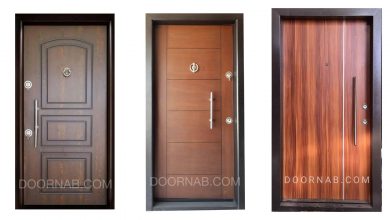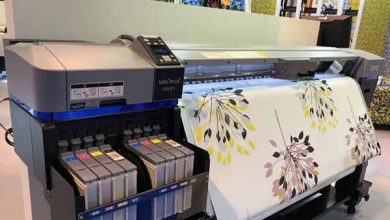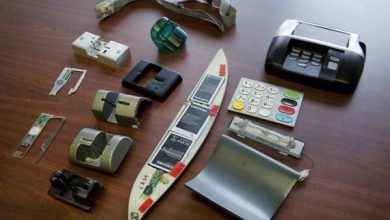What is CNC laser cutting? X-ray technology laser to to cut Embossing is used on fabric, paper, metal, wood, etc. This technique is usually used in industry.
The Price of Laser and Metal Cutting Services: What Should You Pay?
Need a great looking metal and laser cutting service? Do you know the price of laser metal cutting services? Worried about the tight tolerance and precision of your metal laser cutting?
You may have already decided to use sheet metal laser cutting instead of plasma or waterjet cutting or maybe it is an older and cheaper process. It is possible that you are trying to set the price; This article will help you figure out how to calculate the price of metal and laser cutting services.
Here’s what you can expect from your sheet laser cutting services in terms of cost – both in the short and long term.
Prices for metal and laser cutting services: How do they compare?
Laser cutting is more cost effective than using hand tools to cut metal. Although it is an advanced process and costs more than plasma cutting, it is less expensive than waterjet cutting. Mechanical or automated cutting operations are cheaper. Many quality manufacturers offer a combination of laser cutting and machine services so you can choose the one that best suits your project.
How does laser compare to plasma?
The answer depends. Metal laser cutting is less expensive for materials around 12Gb and less thick; While the thickness of your chosen material increases the advantage of plasma cutting. At the heaviest thickness of metal (a bit more on that), plasma perforation has a 40% cost advantage over lasers. In this scenario, precision plasma cutting costs more than both.
What other factors increase the price of metal laser cutting services?
As with most products, there are many factors that go into the total cost of your laser cutting services:
- Equipment and labor costs
- production costs
- Long-term maintenance and durability of metal laser cutting
The main reason to pay more for laser cutting is the cost of the technology. The laser cutter will likely set the manufacturer back at least $200,000. Depending on the size, strength, and capacity of the sheet metal, this number can rise to more than $500,000.
Fortunately, the cost of lasers is low. The gases we use to make lasers are not cheap, and increased demand is driving down component costs, however, and peripherals — such as gold mirrors or zinc selenide windows and lenses — can drive up costs.
As far as operating costs go, you’re in luck. It is common for manufacturers to allow a laser cutter operator to perform secondary operations or operate additional machinery beyond other cutting operations. More efficiency means more end product and a lower total cost to you.
Sheet metal laser cutting rates range from $13 to $20 an hour with only manufacturer fees. Usually the laser cutting factory will pay 65% to 85% of the manufacturing cost for the waterjet service.
The most expensive part of this production process is all the energy needed to convert electricity into light. This work is best left to a metal fabricator and not try it yourself at home.
When evaluating the cost of laser services, here’s the question that will affect you the most: What materials do you laser cut?
Each device has a limit on the amount of thickness and possibly the type of material it can handle. The higher the resistance of the device, the more you will pay to enjoy its benefits. It is worth noting that when cutting sheet metal, the laser does not work well in terms of thickness; So their affordability is losing steam in these programs.
Sometimes the metal or even the grade of the metal plays a role in the effectiveness of the laser. Just look at stainless steel:
- stainless steel:It is one of the most common types of steel in the construction industry. You can harden austenitic grades without the use of heat; But it retains tremendous strength. This makes austenitic steels ideal for laser cutting technology.
- Ferritic stainless steelContains chromium and carbon. This steel is worked in thinner sections and with very little welding. This means that it is very suitable for laser cutting.
- Martensitic stainless steels such as stainless steelFrom iron there is a lot of chromium and carbon here. The engineer can temper and harden martensitic steel. This magnetic group of metals is often used in sheet metal applications.
- Stainless steel duplex It is a mixture of ferrite and austenite. Its power is greater than any of them. This type of steel performs well when laser cutting.
When the manufacturer starts the process, the material doesn’t matter. Laser metal cutting speed combined with high precision makes it more efficient than Waterjet. How clear is metal and laser cutting?
- It takes a laser 16 liters to cut an inch sheet of paper.
- It takes a Waterjet 75 seconds to cut a sheet…”
Faster work results in lower labor and electricity costs.
After the laser cutting is completed, no cleaning is done. All that results is a small amount of dust, and it can be easily removed by sweeping and filtering, so you won’t be paying for private waste disposal facilities like those produced by waterjet parts.
- Long term storage and shelf life
The laser is not boring. So there is no pause to stop the tool running during creation. There are also no additional costs for just replacing the tool. What does all this mean? You will have a new product in your hands.
We’ll say this: Using a laser takes a technician. If you can’t find a good service, you may need to replace or repair parts of your business later.
So here’s another question to ask yourself: Can you justify the price of your metal cutting and laser services with the long-term profit from your supplier’s business?
Do you need high quality? Try our laser and metal cutting services
Although laser and metal cutting may be more expensive than some of the other styles we’ve mentioned; But the precision and flexibility of laser cutting technology is unique. So if you have a project that requires great tolerances and clean cuts, the price of our laser and metal cutting services should not be a deterrent and should be at the top of your list. Just remember you pay for quality!
Providing laser and metal cutting services
What are laser and metal cutting services? A laser is a focused beam of light and focuses a great deal of energy on a very small area. When this happens, the material in front of the laser burns, melts, or vaporizes, causing a hole. Add some CNC to that and you have a machine that can cut or engrave very intricate parts made of wood, plastic, rubber, metal, foam or other materials.
Each material has limitations and advantages when it comes to laser cutting. For example, you might think that a laser can cut anything; But it is not so simple.
Not every material is suitable for laser cutting. Because each material requires a certain amount of energy to cut. For example, the energy needed to cut paper is much less than the energy needed to cut a 20mm thick steel plate.
Keep this in mind when purchasing a laser machine or ordering through our laser and metal cutting services. Always check the power of the laser or at least the material that can be cut.
For reference, a 40 watt laser can cut paper, cardboard, foam and thin plastics; While the 300 watt laser cutter can cut thin metals and thicker plastics. If you want to cut steel sheets with a thickness of 2 mm or more, you need at least 500 watts.
In the following, we will examine how to use a personal machine or metal laser cutting service, and some design principles.
Using laser and metal cutting services versus owning a cutting machine
In the age of CNC machines, laser cutters capable of cutting metal are still too expensive for the average hobbyist. You can buy low consumption machines (less than 100 watts) relatively cheap; But these hardly scratch the metal surface.
A metal cutting laser must use at least 300 watts, which will cost you at least $10,000. In addition to the price, metal-cutting machines require gas—usually oxygen—to cut.
Less powerful CNC machines, for engraving or cutting wood or plastic, can range from $100 to several thousand dollars, depending on how powerful you are.
Another problem with having a metal laser cutter is its size. Most machines capable of cutting metal require space that is only available in the workshop.
However, laser cutters are getting cheaper and smaller every day, so you can probably expect to get desktop laser cutters for metal in the next few years. If you are just getting started with sheet metal design, consider online metal and laser cutting services before purchasing a laser cutting machine. Below, we will discuss several options!
Whatever you decide on, remember that laser cutters are not toys; Especially if they can cut metal. They can seriously injure you or damage your property.
Design tips
Since laser cutting is a two-dimensional technology, it is very easy to prepare the file. Simply select the part you want to make and send it to our online laser and metal cutting service.
To make your first laser cut sheet metal, you need to do the following:
- In the vector drawing program, draw the contour of the part of the piece you want.
- Save it in the appropriate file format (see the list of online services and supported file types).
- Upload it to an online laser and metal cutting service.
- Check the price or ask for a quote and if the price is right, order the part.
- wait to receive.
Before ordering something for laser cutting, there are certain rules you must follow. Most services have some kind of guide on their site that you should follow when designing your pieces, but here are some general guidelines:
All incision lines must be closed. This is the most important and logical law. If the contour is left open, it is impossible to remove the part from the raw metal sheet. The only exception to this rule is when the fonts are intended for inscription or engraving.
This rule varies with any online laser and metal cutting services. You need to check the required color and line thickness for cutting. Some services offer laser engraving in addition to cutting and may use different line colors for cutting and engraving. For example, the red lines for cutting can be; While the blue lines for H.
Some services don’t care about the color and thickness of the line. Before uploading files, check with your chosen service.
If you need holes with tight tolerances, laser drilling is wise. Drilling creates a small hole in the material that will then guide the drill bit when drilling. The diameter of the perforated area should be about 2-3 mm; But it depends on the diameter of the hole and the thickness of the material.
This only makes sense for material thicknesses of at least 1.5 mm. For example, steel melts and vaporizes when cut with a laser. After cooling, the cut hardens and is difficult to roll. For this reason, it is good practice to laser drill and do some drilling as described in the previous tip before cutting the thread.
Sheet metal parts may contain sharp corners; But adding a bracket at each corner—at least half the thickness of the material—makes parts more affordable. Even if you don’t add them, some laser and metal cutting services add small chips on each corner. If you need sharp corners, you must mark them as indicated in the service instructions.
The width of the kerf should not be less than 1 mm or the thickness of the material. The length should not be more than five times its width. The thickness of the panels shall not be less than 3 mm or twice the thickness of the material. As with the gaps, the length should be less than five times the width.
the distance between the nails should be at least 3 mm; While the tongues must have a distance of at least 1 mm or the thickness of the material.
Failure to comply with this rule may lead to deformation of the part.
- Multiple parts or slim features
When cutting multiple parts on a sheet of metal, a good rule of thumb is to leave a gap of at least the thickness of the material between them. If you place the parts too close together or cut too thin features, you may burn material between the two cut lines.











